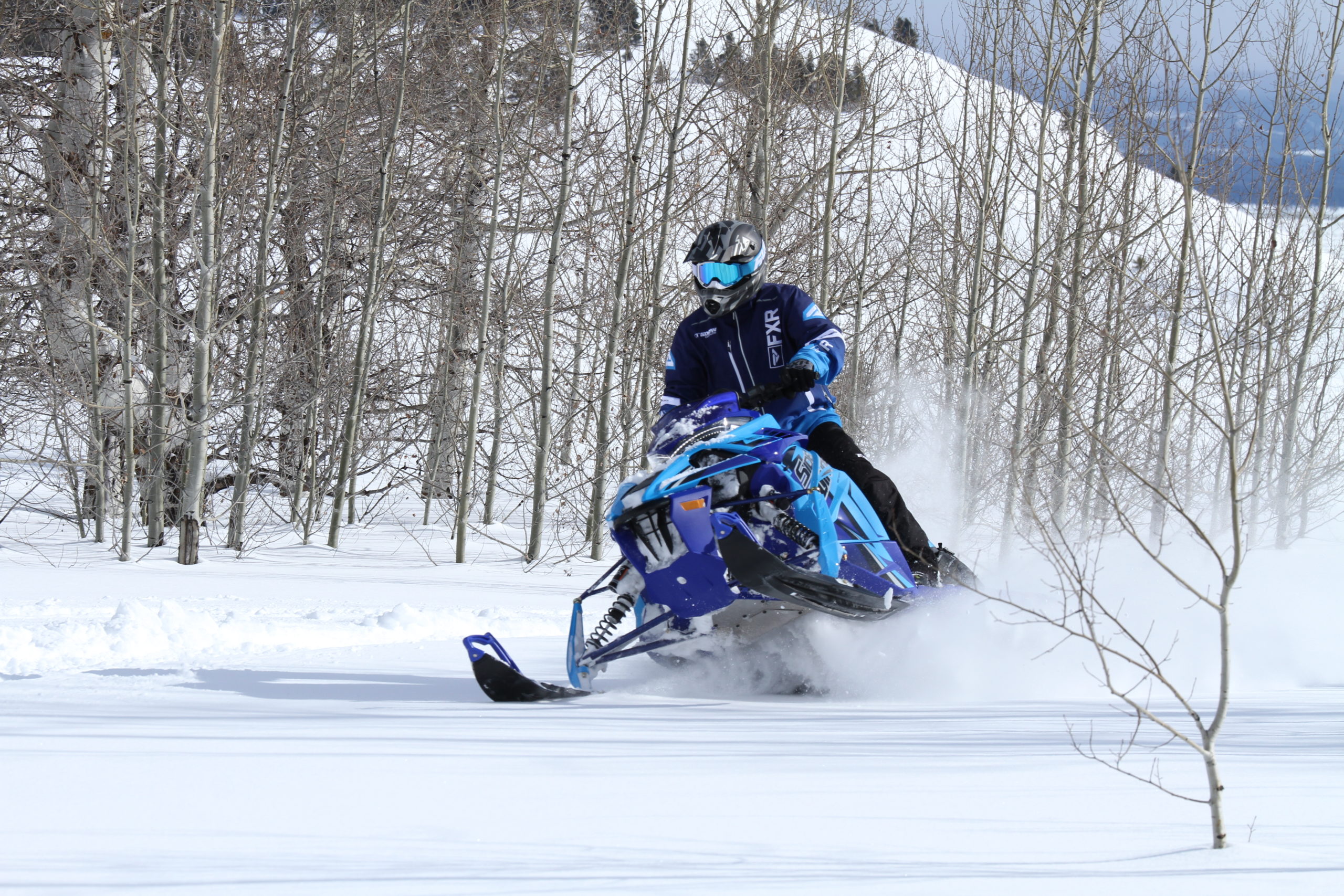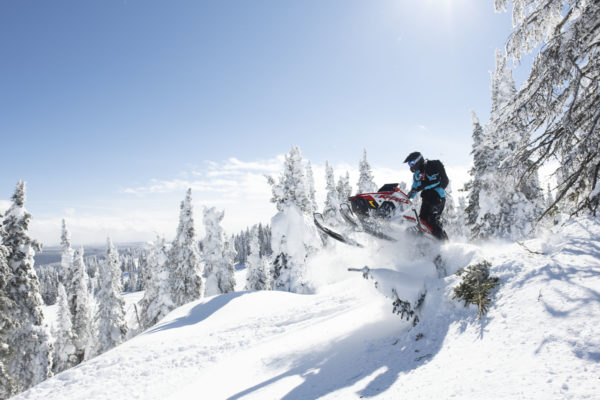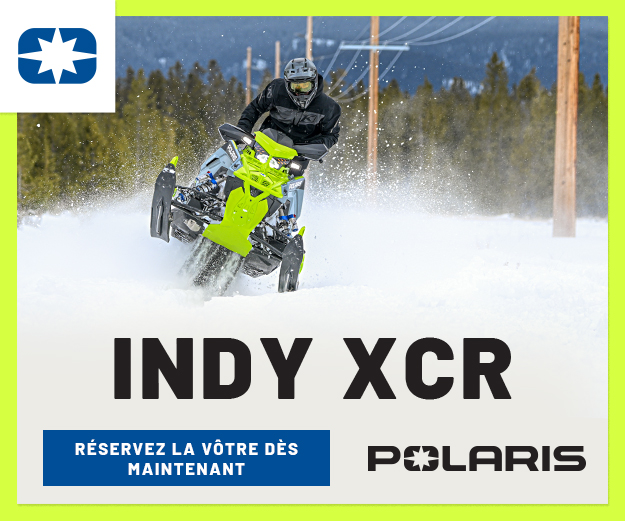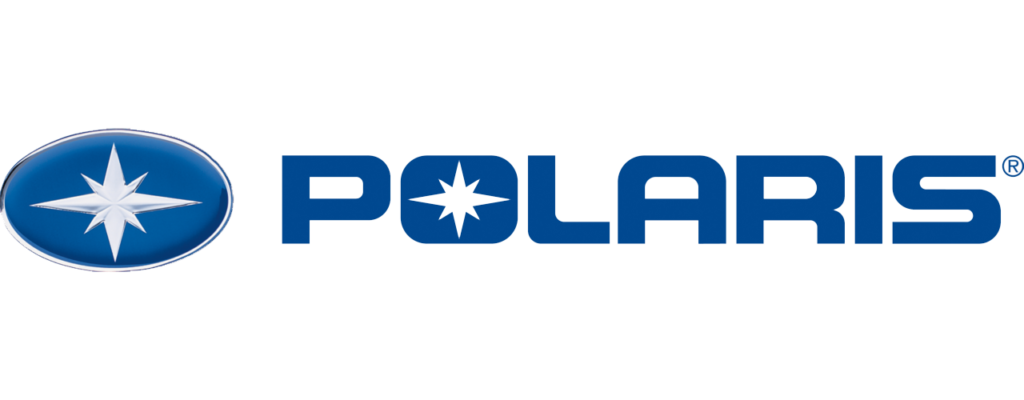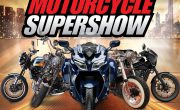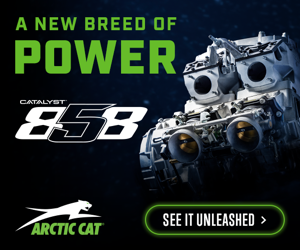The freedom of being the alpha dog means that you can create your own personal brand of Khaos! These three sleds allow their pilots to do whatever maneuvers they want, and conquer any terrain, whenever they put boots on the boards and gloves on the bars.
The new 850 RMK Khaos 155 from Polaris, the newest version of Ski-Doo’s 850 Freeride 154, and the M8000 Hardcore Alpha One 154, are all meant to be the strongest and most versatile all-mountain sleds from these three OEMs. With each 800+cc sled, you get things like reinforced frames, top level shocks, and the newest technology. Our group of super-experienced, and maybe a tad crazy, test riders rode them all, and here’s what we thought of them.
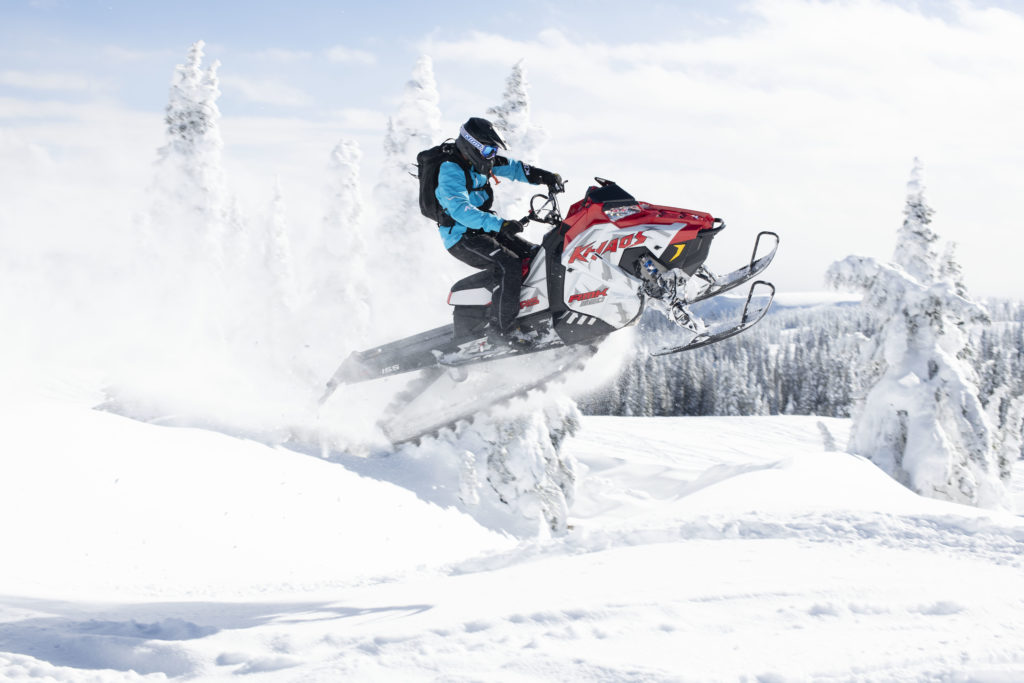
Polaris RMK Khaos gets wild
And you can really put your rowdy-suit on with an 850 like this! Effortless to get on one ski, like all RMK sleds, but designed to be able to take punishment and still knife through tightly spaced trees, so what’s not to like? Polaris definitely tried to think of everything on this new mountain sled. It is the highest grade, most versatile, all-off-trail sled that Polaris makes.
The AXYS chassis with aluminum over-structure has made a living out west by being able to dig itself out of even seemingly impossible holes, but add an 850cc Liberty Patriot motor, and balance it so well that an 8-year-old can ride it, and you’ve got yourself a winner. On-the-spot power adds to the flickability of this sled. Plus, there is new rear suspension geometry that helps in a multitude of situations by subtracting rider effort. But that’s just a few of the things that makes the Khaos worth the $13,899US. The new Pro RMK React front suspension with forged A-arms and spindles is adjustable from 36-38 inches wide, and comes with a swaybar. Other all-mountain sleds, like Ski-Doo and their Freeride, also have swaybars, and we think this is prudent for certain situations with this focused machine. It makes the sled even more predictable, especially in varying terrain and snow conditions. This is a mountain sled that can go from blazing the corners on the trail, to carving up the POW, without skipping a beat.
Of course, with any new top of the line sled, you get the newest best shocks. That would be the Walker Evans Velocity absorbers, standard on the Khaos. These are made for rallying big bumps, jumping off logs, your buried cabin, cornices, etc. But they also can be adjusted to be just as comfortable taking a 60-mile trail ride through moguls galore. They feature a position-sensitive velocity needle and hi-lo compression adjustment.
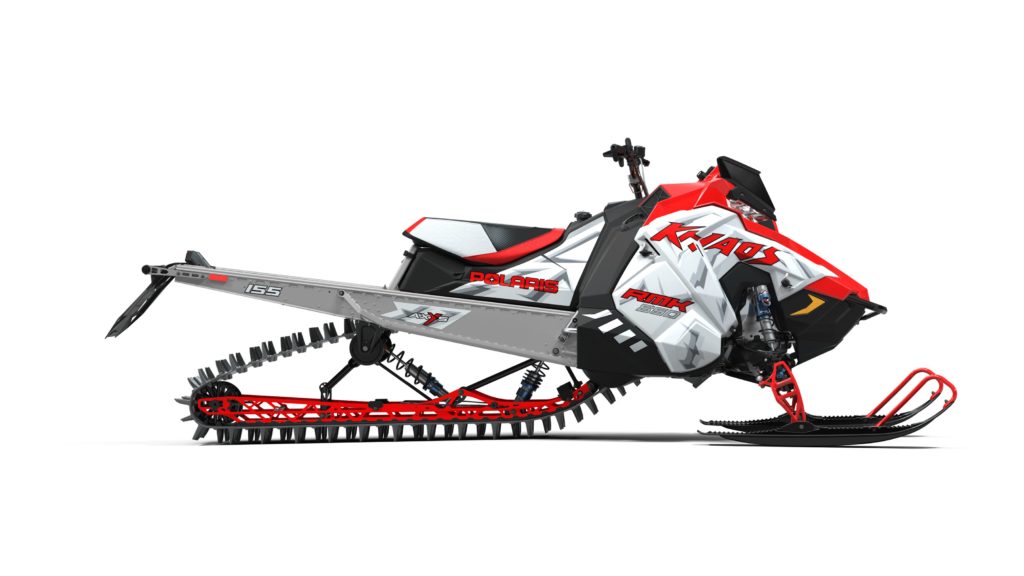
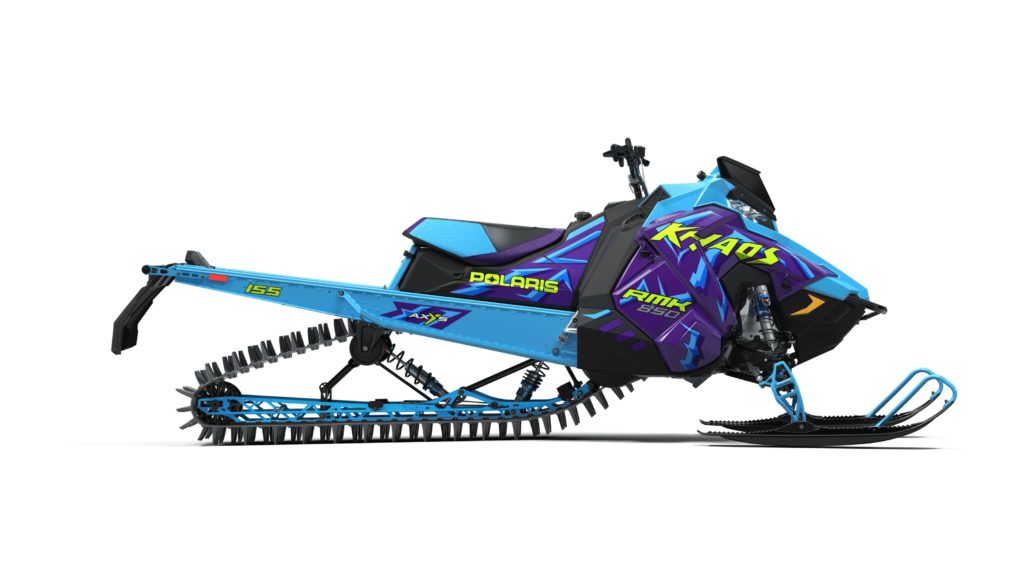
The engineers at Polaris know big mountain riders, but personally, even us vertically challenged riders ride a lot off-trail. How many sno-cross racers (who often double as incredible off-trail riders) do you know that are 6’5” tall? Polaris added new XT running boards that make sidehilling easier, and have more room for us folks that like to use ALL the boards. Plus, there’s a mountain grab bar that was moved down 2.5-inches so that us perfectly proportioned dudes and dudettes don’t smash our chests into the loop, or have it uppercut our helmet when we’re trying to corner aggressively in the trails. Plus, the shorter and lower Pro-Lite seat allows normal/medium riders to maneuver around it and hop sides like a ninja boss. If Levi LaVallee is reading this article, he is probably nodding his head in agreement and giving the thumbs up!
The 850 has XT hyfax to go along the XT running boards. The new hyfax gives longer durability, plus it is lighter. Hasn’t everyone forgotten to put the ice scratchers down at least once when out on the trail, after being in the powder all day? Come on, you know you’ve done it… this should help at least a little bit if you can’t smell the hyfax burning right away. Plus, you get an option of the 2.6 lug series 6 track or the 3.0 lug series 7 track.
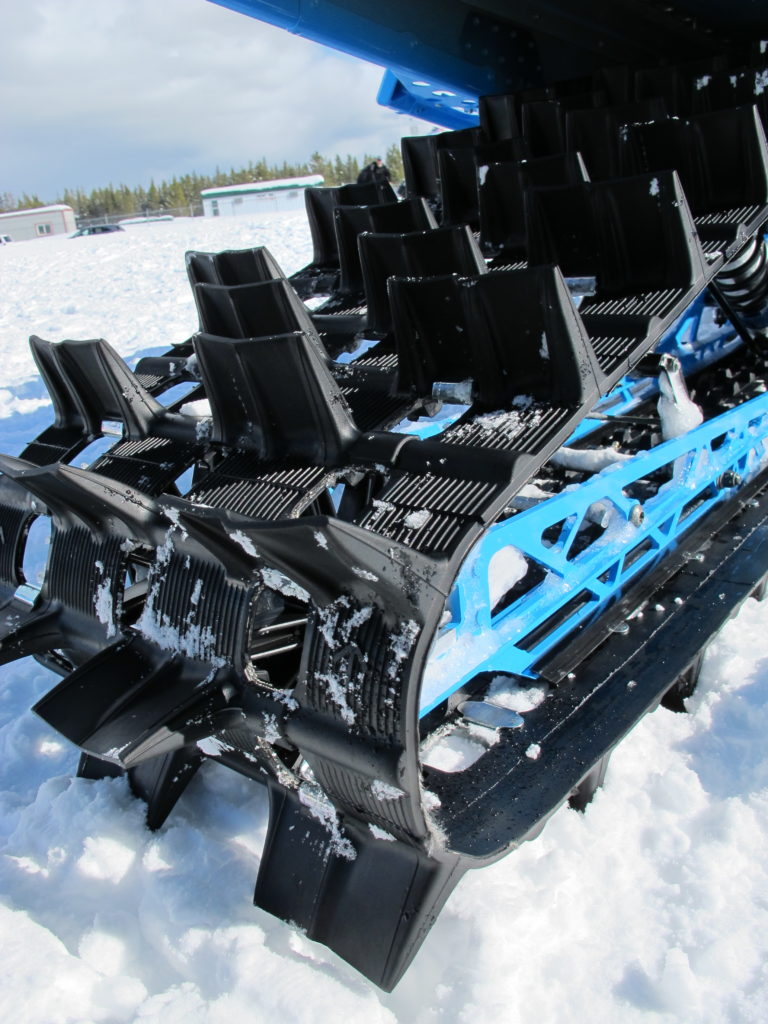
The Polaris Interactive Digital Display offers Bluetooth, GPS mapping and more, but isn’t standard on every model. We had it on our test model and while it is nice, it is certainly secondary to any of the other standard features on the Khaos. The standard message center gauge is all you need. But the new battery charging outlet on the ES model, next to the right boot placement, is a great idea and is definitely needed in locations like the northern reaches of Canada.
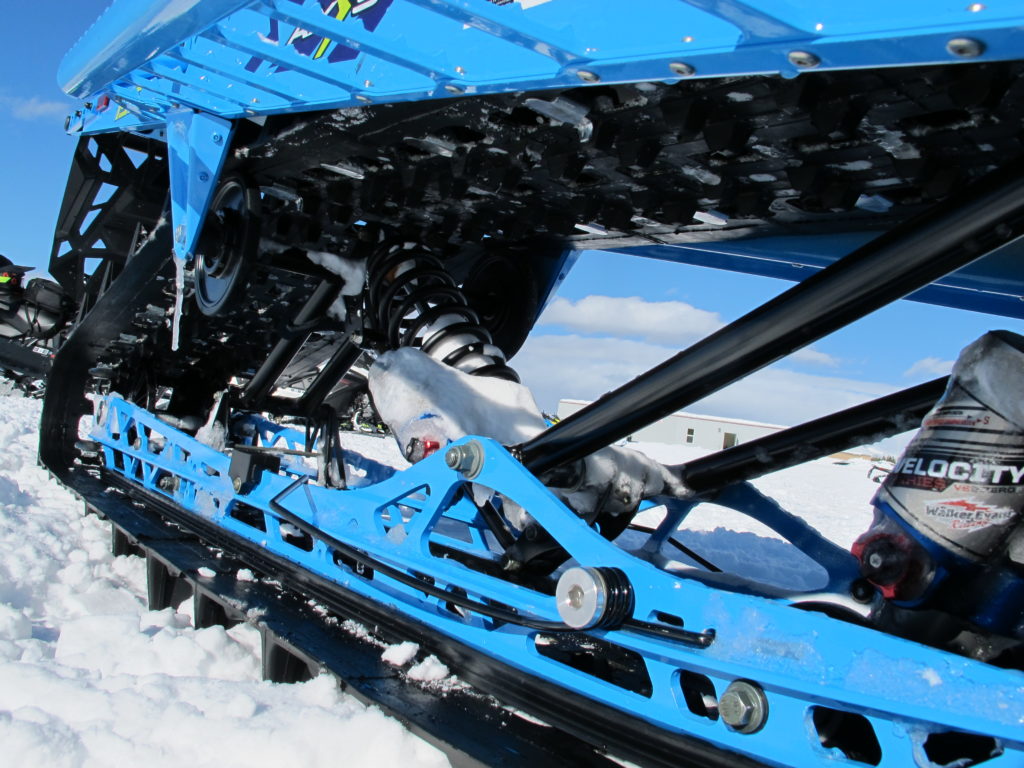
Ski-Doo Freeride 154 is easy
Go big, or don’t go to the dealership!
I’ve always been a fan of the Freeride, since it first came out and spiced up Ski-Doo’s line-up over a decade ago. This newest iteration has only strengthened my support for this segment of Ski-Doo’s mountain/off-trail line-up. But this sled is made for more abuse than the standard Summit sled, and if you are not willing to test its limits, then you probably don’t deserve one… and you probably can’t afford it anyway!
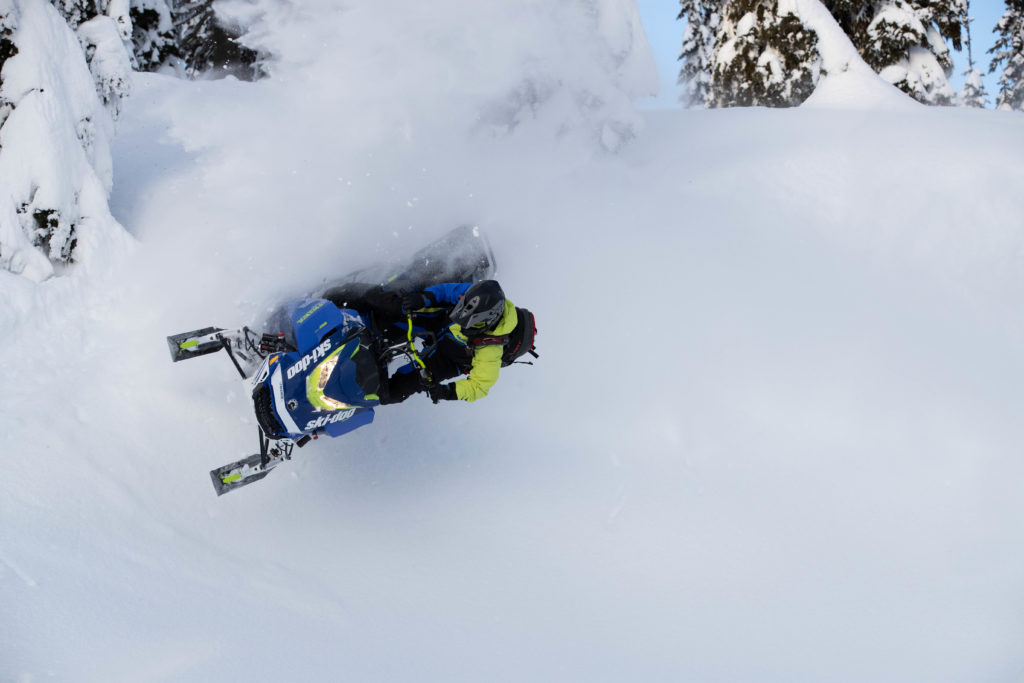
What makes this sled a stand-out is that it is just easy. It is easy to toss around; easy to launch off big jumps; easy to start; easy to go from trail to powder and back again; easy to accessorize; easy throttle pull; easy to summarize, etc. It’s wide stance and quick-disconnect sway bar still set this apart as far as versatility goes. But let’s start with some of the big wins for the Freeride versus the other sleds in this group. First off, it comes with the SHOT ultra-capacitor starting system, which is only an option on certain E-TEC 850 off-trail sleds. Why this isn’t an option on all Ski-Doo sleds, only a select, few people in Valcourt know. If you’ve never used it, you don’t know what you’re missing. It allows push-button starting, basically all day after the first start in the morning (when you have to pull the cord a couple of times). Plus, it weighs a fraction of a battery and traditional starting gear system (subtract 20lbs.).
The 850 E-TEC direct-injection 2-stroke motor puts out anywhere between 165-170+ hp, depending on what dyno tests you trust, but the clutching is spot on to allow slow crawls along a side-hill, and then instantly turn uphill and have perfect power control on thumb-point. This is helped by the pDrive primary roller clutch which saved almost 3 pounds over the TRA VII it replaced.
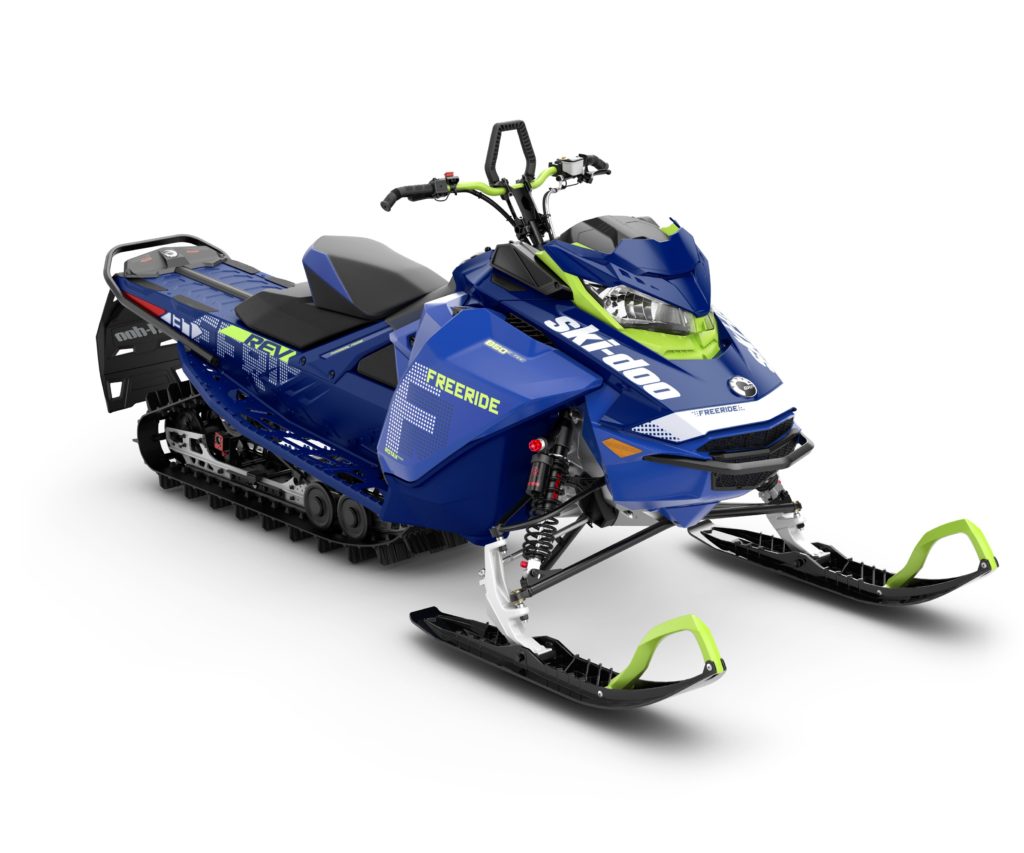
Something less talked about with the 850 sleds when they first came out was heat control and subsequent belt life. All discussions about if, why, or what to do, was squared away this year with new flow dynamics, including new clutch-side-panel venting and additional internal changes.
Possibly the two most important changes for this year on the Freeride are the full-length running boards and new ski-spindle and ski-stopper. The new full-length running boards have 60% wider front openings, even more grip, and save 1 pound. The spindles are lighter too, and the stopper makes sure your ski doesn’t stop you!
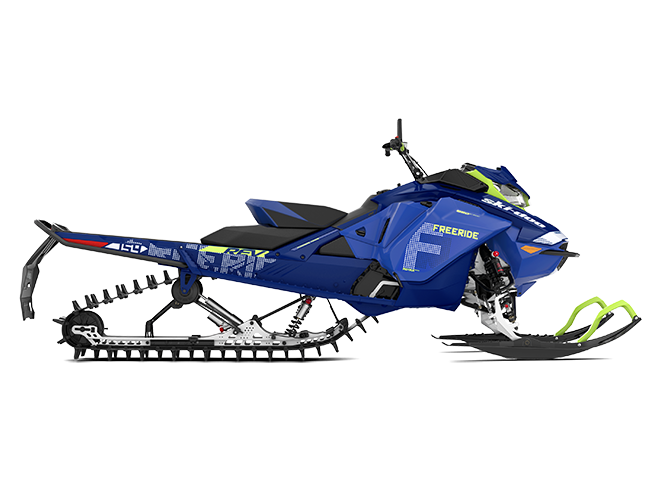
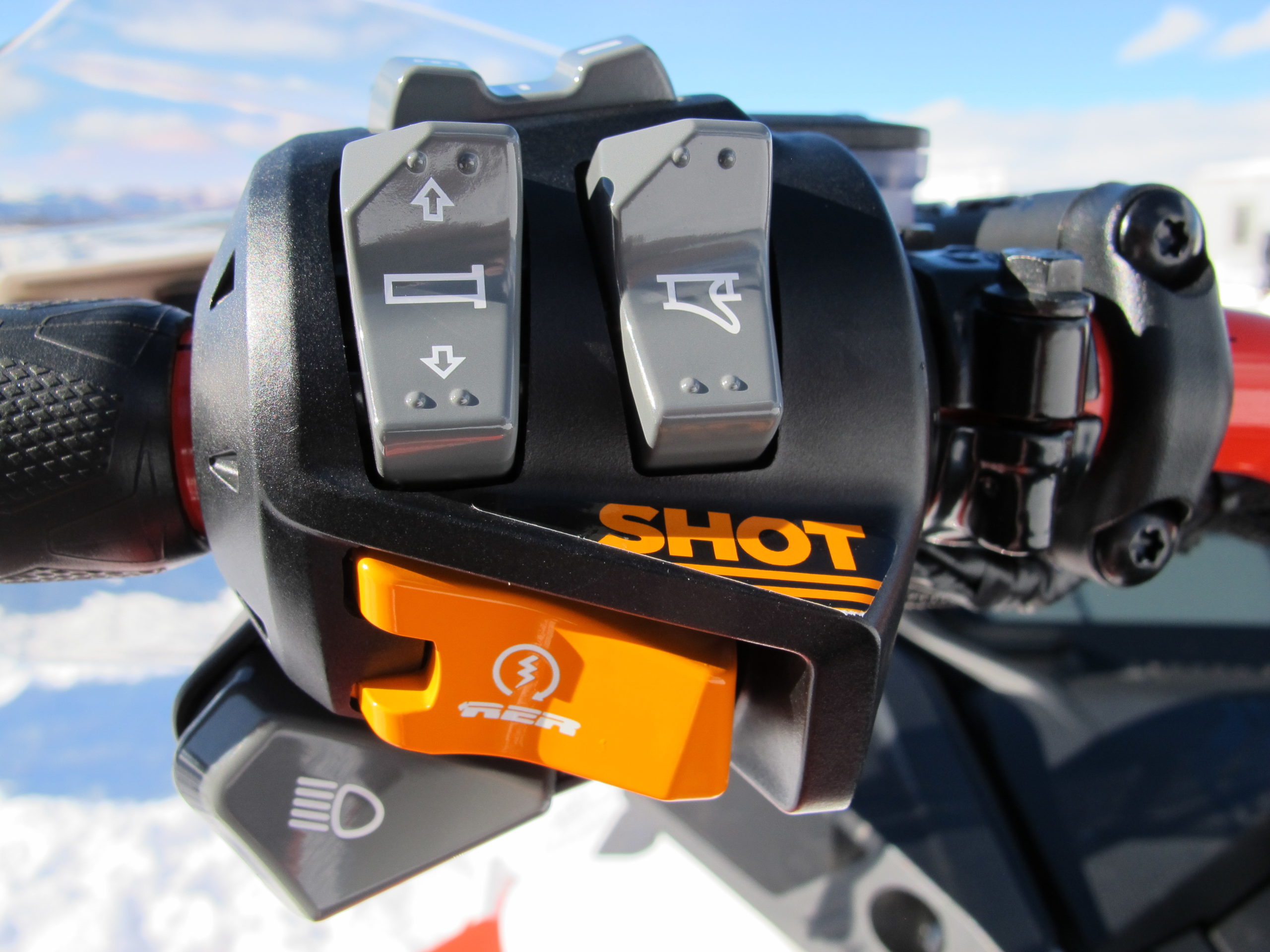
There are too many good things to list about this sled, including KYB Pro shocks, tMotion rear suspension, deep snow seat, warmed glove box and more… but it really did not change drastically from 2019. One last thing that Canadians and Americans from the midwestern and eastern provinces/states enjoy is that sea-level calibration is available on the Freeride. I know plenty of folks in places like Labrador; Quebec; Ontario; Manitoba; Maine; New York; Michigan; Wisconsin and Minnesota who will take advantage of that!
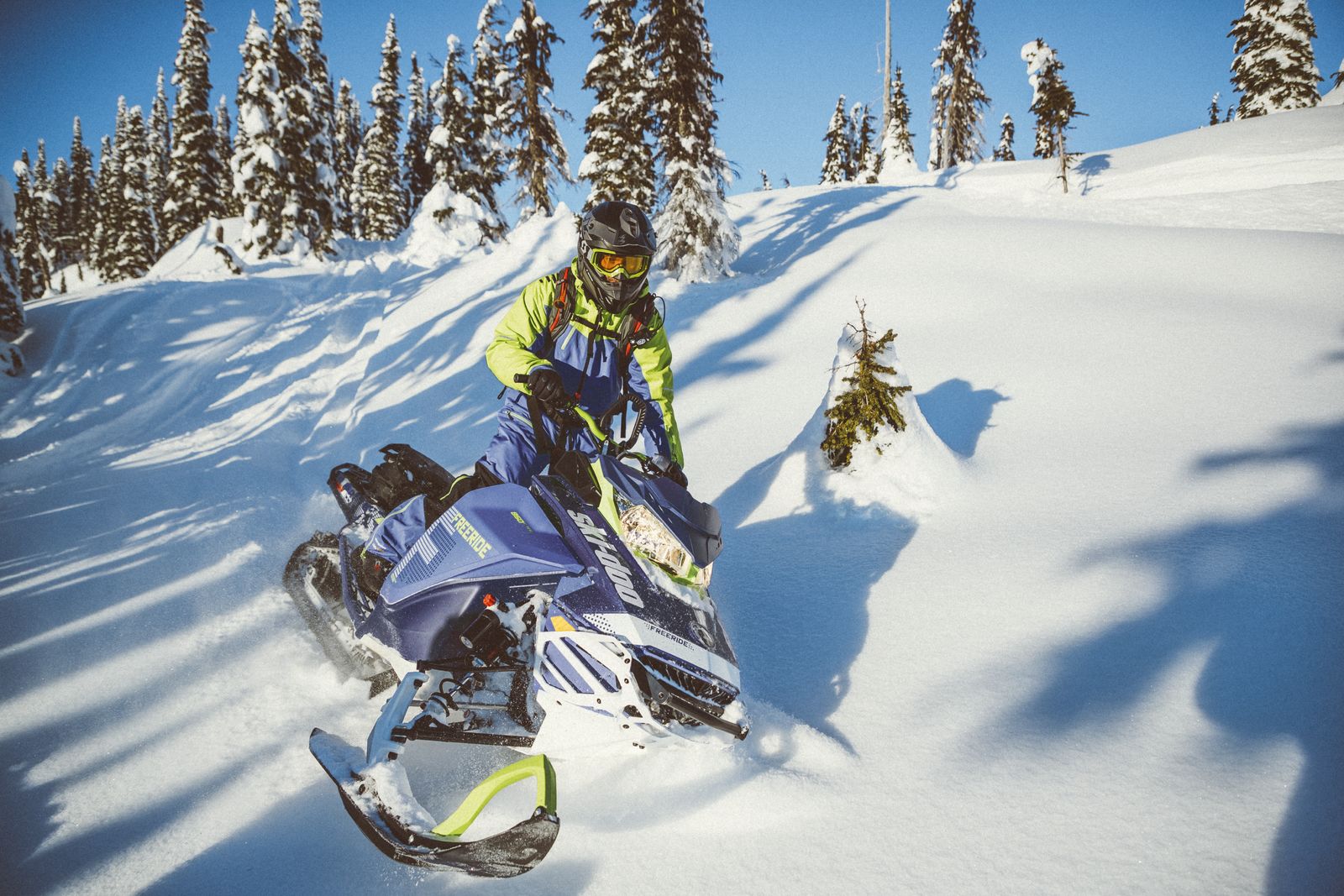
Arctic Cat M8000 Mountain Cat Alpha One… that’s a mouthful!
Despite the unnecessarily complicated 7 word-count naming convention, this sled is frigging fun! Cat has made big strides in just a couple short years to really compete on par with Polaris and Ski-Doo in the mountains. The Alpha One, introduced last year, was the culmination of several years of Arctic clawing its way back to the top ranks of the rocky mountain sled hierarchy.
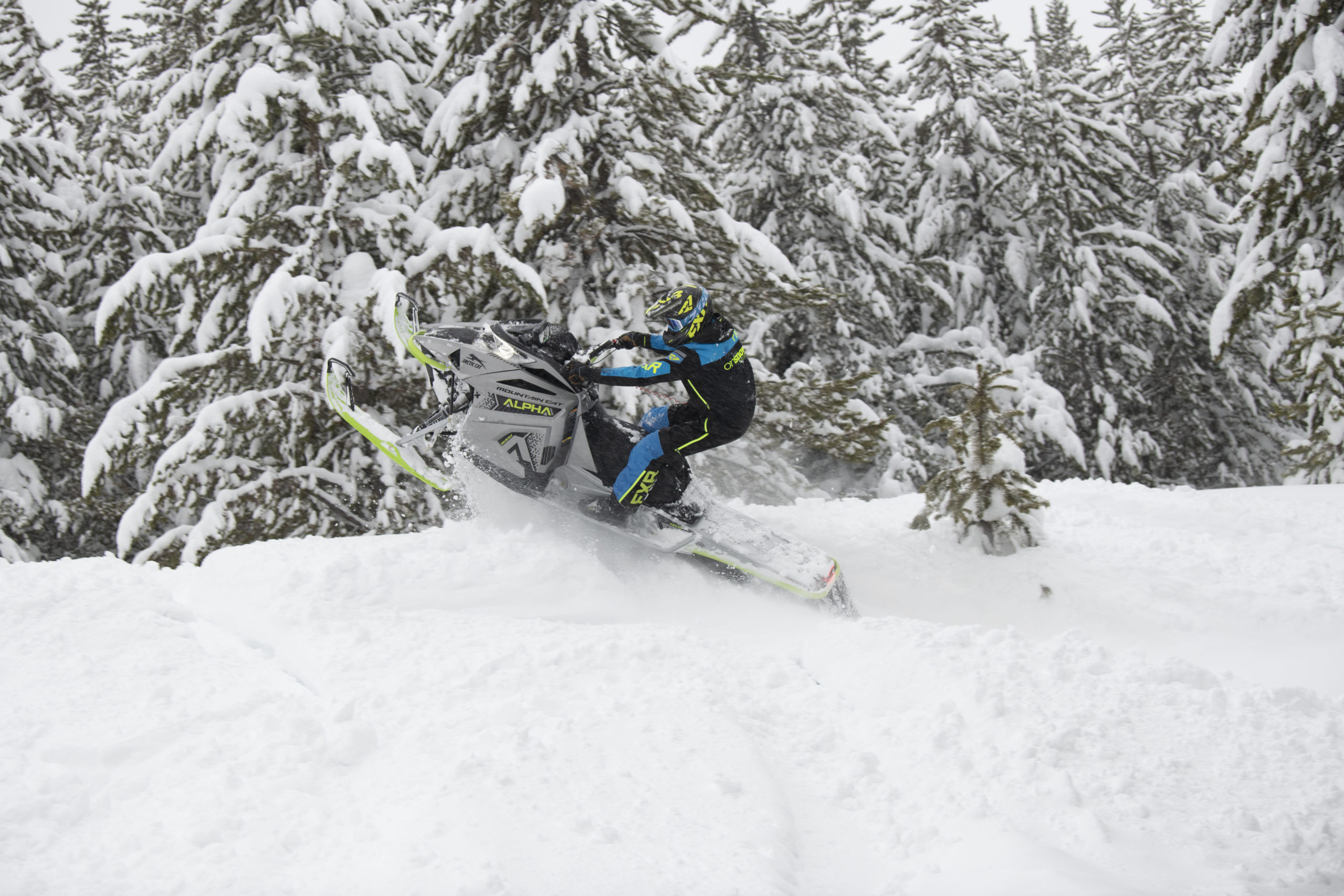
The Hardcore 154 is an all-mountain, smile generation station! Some will argue that the Alpha One Hardcore is more of an “RMSHA Special”, but we think dubbing the sled as a versatile sled for all days is right where this sled should be segment-wise. That said, Cat took windshields off everything in their off-trail lineup, so I guess everything is now ‘totally hardcore dude!’ In all seriousness, the single beam Alpha one rear suspension, paired with the aggressive shock package on the Hardcore 154, plus the 35.5 – 37.5 adjustable stance, make this sled desirable to pro hillclimbers and aggressive weekend warriors alike.
The big difference between all Alpha One mountain sleds and anything from the competition is the monorail; single beam; center pivot-point; extruded aluminum & magnesium; hollow-box design; lighter weight, and more efficient rear suspension. How is that for another mouthful? But what it means is that this rear suspension will take less effort to make it do what you want it to do, and allow you to more easily access mountain zones than any other Cat rear suspension would. It dropped 15 pounds versus the previous mountain skid, and holds way less snow, so there’s less weight you have to fight throughout the day.
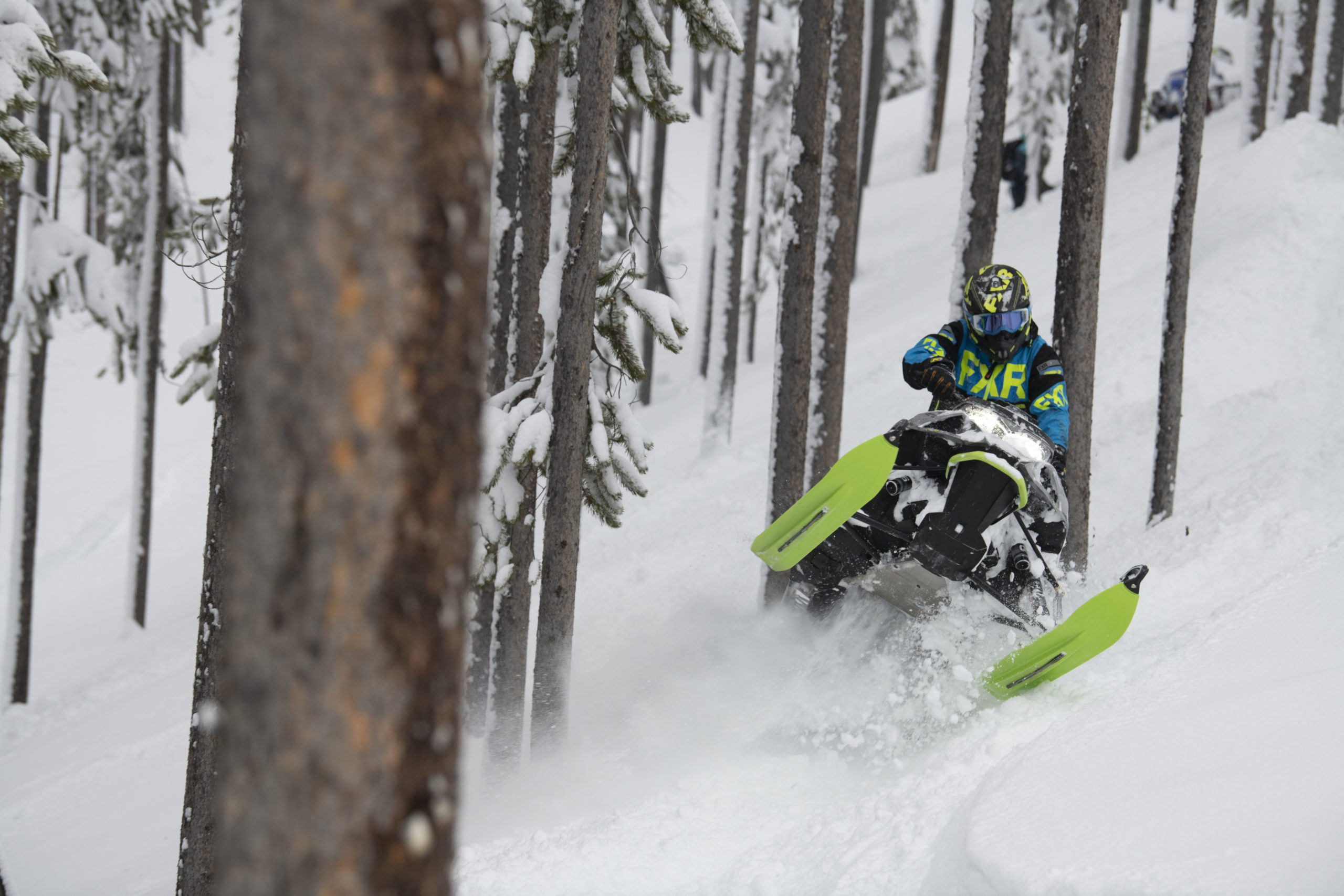
Two little things we love about this Cat sled are the LED headlights and the PowerClaw track. You wouldn’t think these two things go together, but when you are trying to find your way out of a challenging area and the sun is going down, you will be happy to see things better, and the 1-ply lightweight 3.0 pitch is something that is imperative in mountain tracks. Reinforced running boards are appreciated, especially by big guys who love to jump. But I am not a fan of how small the goggle holder is in front of the steering post. It is a great idea, and awesome for basically anything other than goggles.
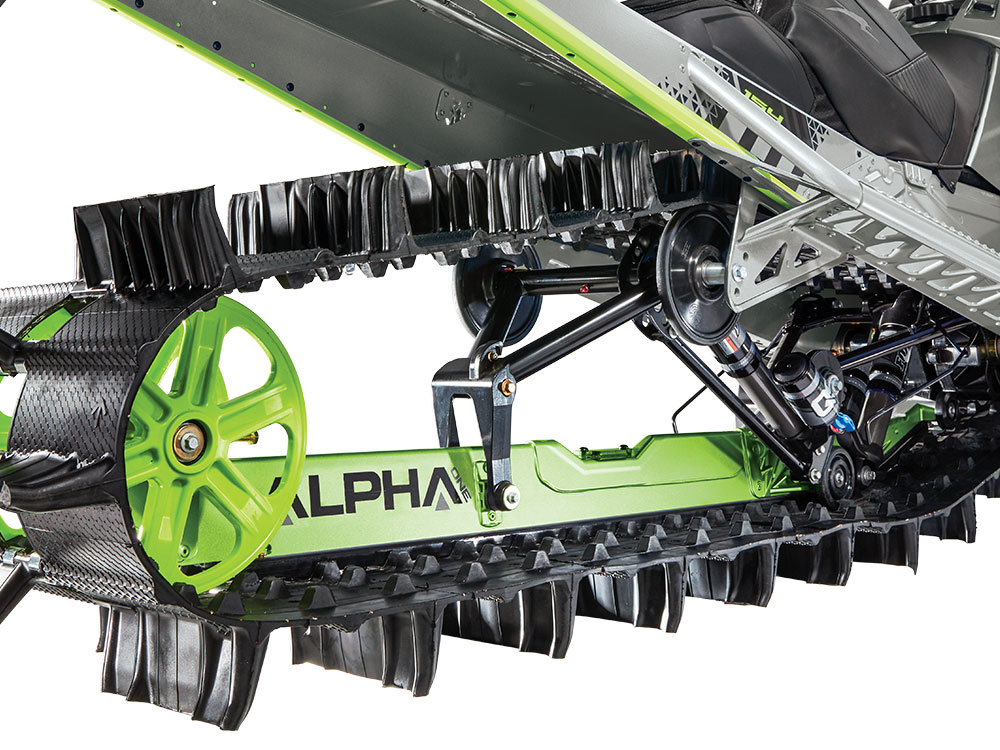
While this is the lone 800cc sled we tested in this group, this semi-direct injection motor got a ton of changes for 2020. Changes are almost too numerous to mention including new cylinder; repositioned injectors; new piston; new flywheel; new fuel rail and fuel calibration, and more. Remember, in the mountains it’s all about power-to-weight while you are riding, and torque and track speed are things that are often lost in discussions between 800s and 850s. This sled and motor combo more than hold its own in the steeps… but I know there are oodles of Cat guys and gals clamoring for an 850, like now!

Rider Thoughts and Cabin/Camp debates
Our self-gratifying test riders, me included, debate a lot about all the sleds we ride. Comments on the Polaris include “the rear suspension and its forward position make the front end feel extremely light, and it handles a turn with greater precision.” Consensus is that in the powder, the Polaris Khaos is incredibly nimble, just like all the RMK’s, but also does the ‘big air’ better than the average of the group.
On the Alpha, many discussions revolved around the trail-ability of the sled. The off-trail initiation of turns is definitely #1 or #2, depending on how many cocktails you’ve had before the after-ride debate begins. But several of our riders actually supported the hard-pack ability of the Alpha. Don’t forget that all the Cat front ends had their initial roots in sno-cross and that, with the terrain following rear suspension, makes this sled a new beast to tame on your way out to the deep snow.
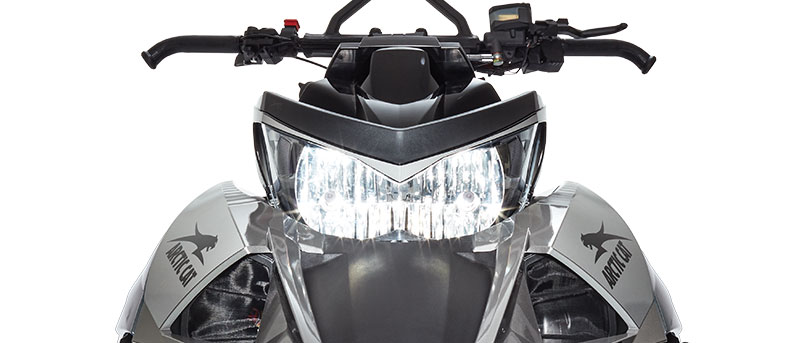
The Freeride gets very little negative feedback, and obviously every-single-rider loves SHOT. The versatility, continuous improvement, and attention to the little things are all aspects that our riders appreciate from Ski-Doo with this sled.
If I personally had to pick a sled to buy, and money was an issue, I would put the Freeride in my trailer. However, if my location, age, finances, and focus was changed, then the Khaos and the Hardcore would take the top seat. I guess the middle-aged, no effort required guy might like the Freeride… while the rider who has to have the newest tech and wow factor might gravitate to the Alpha… and the rider who just wants the best sled for showing off incredible skills to your buddies should take the Khaos. I am not preaching this as gospel, but this is one person’s take on a collective crew update.
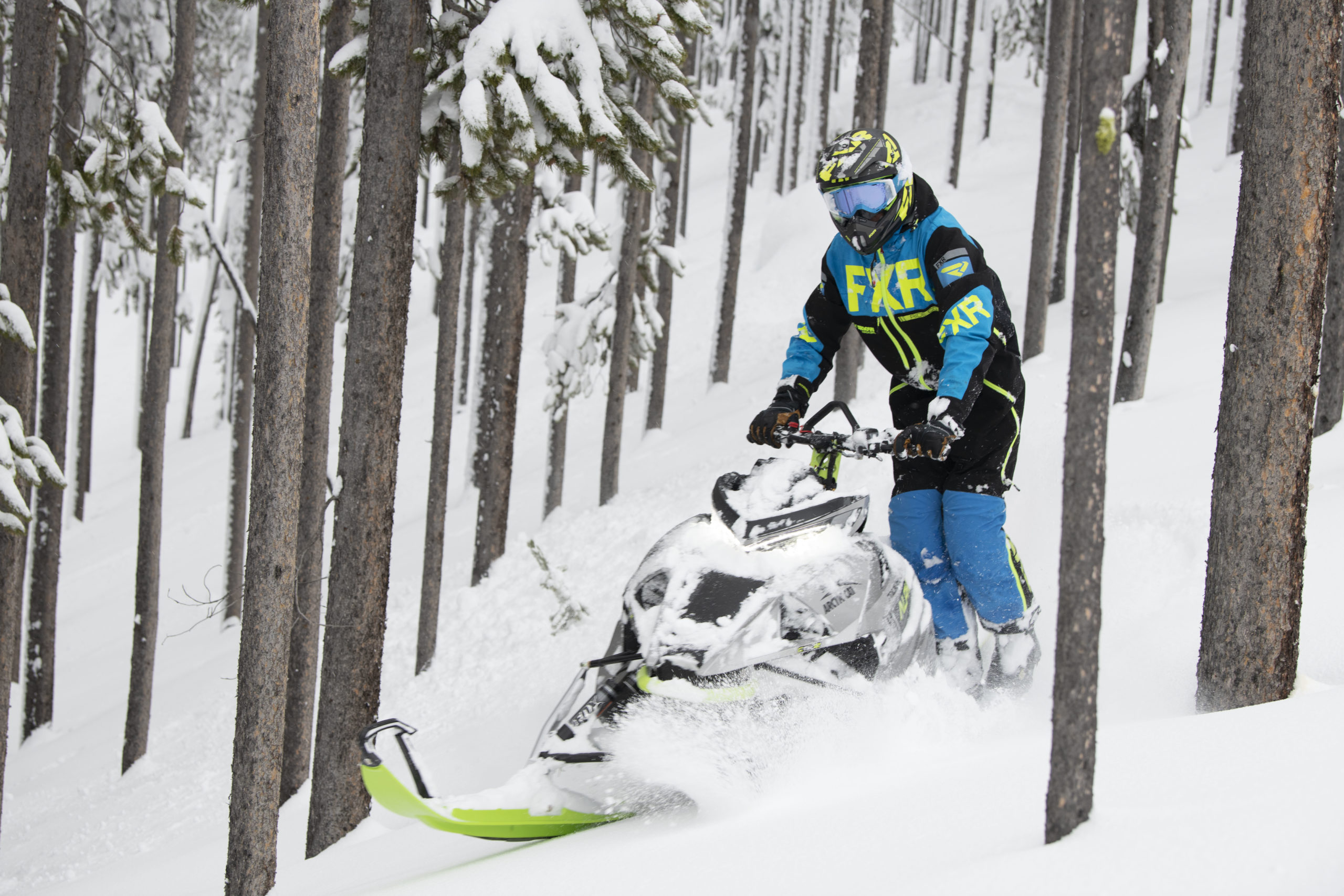
YAMAHA X-TX LE, Tree-ticking turbo!
With Yamaha essentially leaving the true mountain-sled market, there are few real off-trail sleds for team blue that can hold their own in the deep snow for 2020. The two that can are the BTX-LE and the XTX-LE. The XTX we feel is a more playful machine, but we will say it straight-away, this is not a mountain sled. The reason we are mentioning it here is because it does stack up well with the ability to take big jumps, and maneuver off-trail in some of the similar scenarios that the other three do.
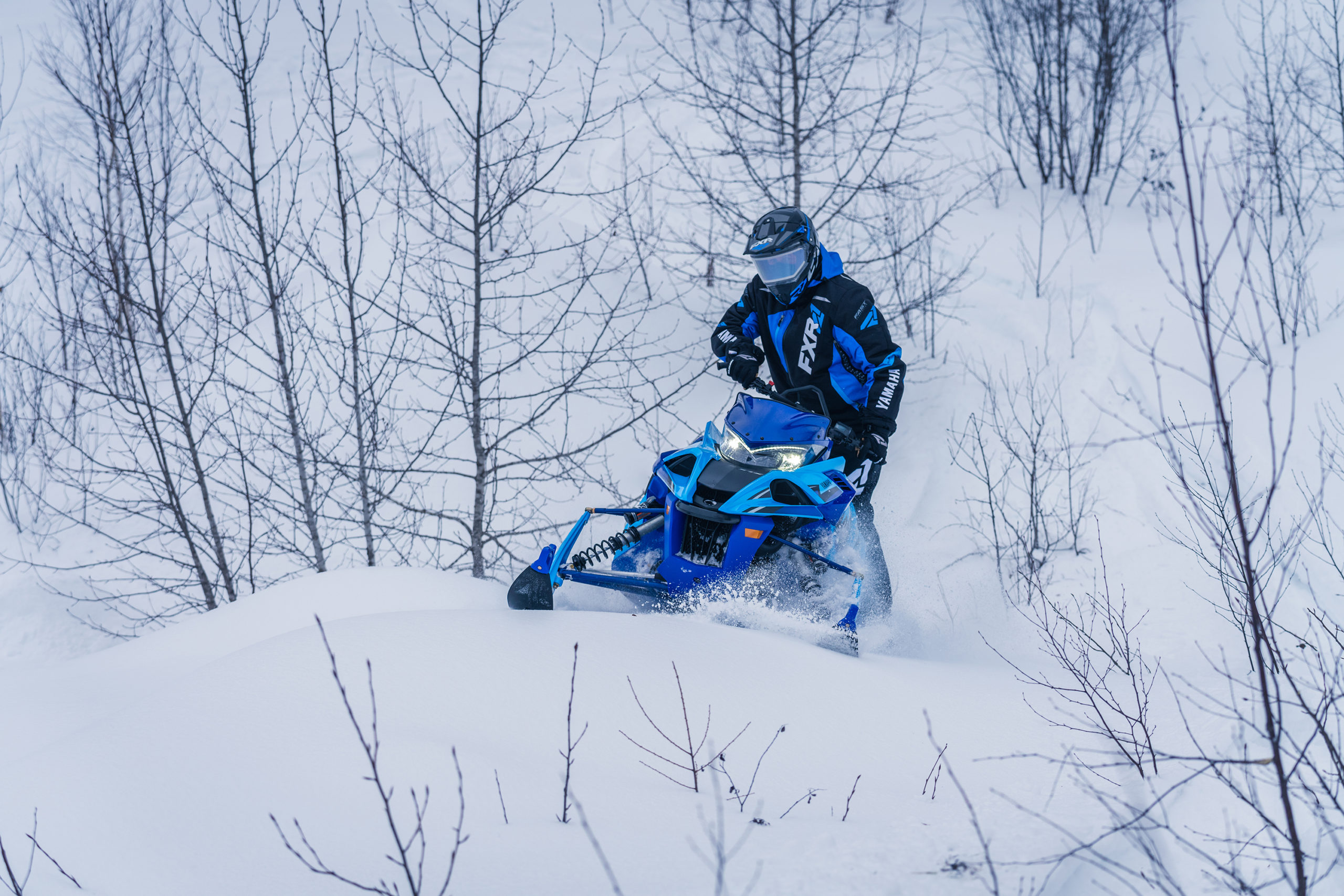
It is always important with the big 4-stroke turbo from Yamaha to remember that there is no other motor that produces this power at any altitude. 200+ horses is truly remarkable to hold onto with your two hands. The track speed this power produces allows any Sidewinder sled to do things that 800s and 850s simply can’t. Thankfully, there’s a new lightweight brake disc that improves stopping at the same time… when you need to pull out of warp speed.
The 2020 XTX-LE is a new model with a 146-inch long Cobra 2-ply track. This is a change from the 141-inch in 2019. The new longer track only has a 1.6-inch lug, but that can often be enough with the turbo boost to pull some wicked off-trail maneuvers. With Fox QS3 coil-over shocks up front, and a 2.0-inch diameter QS3 in the back of the skid, this sled has all the capability in the world to bounce off boulders, or crush them. The skid (Versattack) is an uncoupled torsion spring version which was new for 2020 as well, and allows playful transfer. Paired with the 42-inch wide ARCS front suspension and 6.5-inch wide skis, this sled is stable, but is also made to play through the fields and meadows of the mountains.
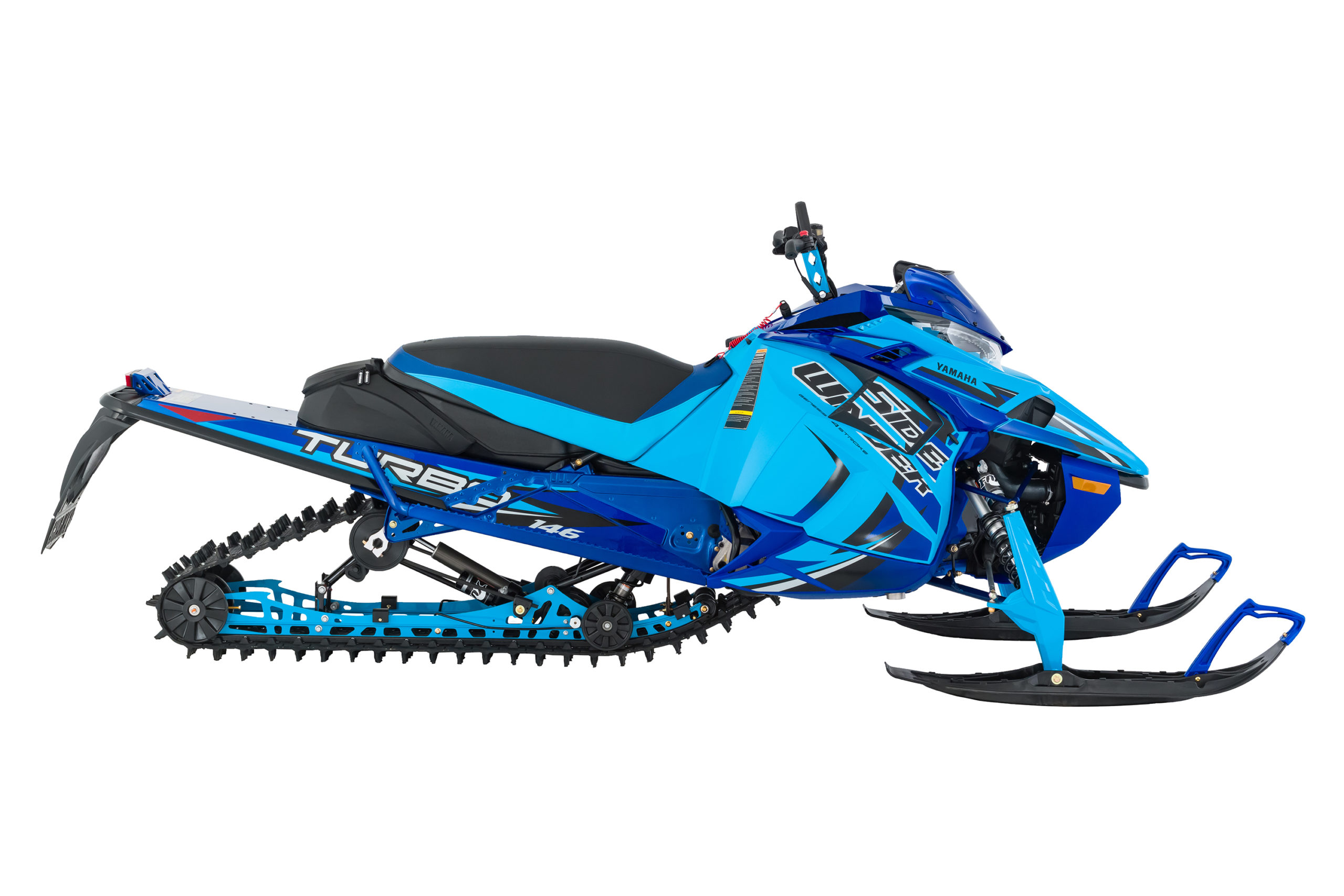 Because Arctic Cat makes the chassis for all the Sidewinder sleds, this Yamaha gets all the cool updates that Cat has as well. Those include a tether (your significant other thanks Yamaha and Cat) and push-button electric start. We appreciate other standard options like a heated mountain seat, tunnel bag, ice-scratchers for low snow conditions, and racing running boards. We enjoy the RCA plug standard for a heated helmet shield option, or to run other things.
Because Arctic Cat makes the chassis for all the Sidewinder sleds, this Yamaha gets all the cool updates that Cat has as well. Those include a tether (your significant other thanks Yamaha and Cat) and push-button electric start. We appreciate other standard options like a heated mountain seat, tunnel bag, ice-scratchers for low snow conditions, and racing running boards. We enjoy the RCA plug standard for a heated helmet shield option, or to run other things.
To take 200 ponies home though, is not cheap… but this sled motor will also last a minimum of twice as long as a standard 2-stroke, so take that into account.
